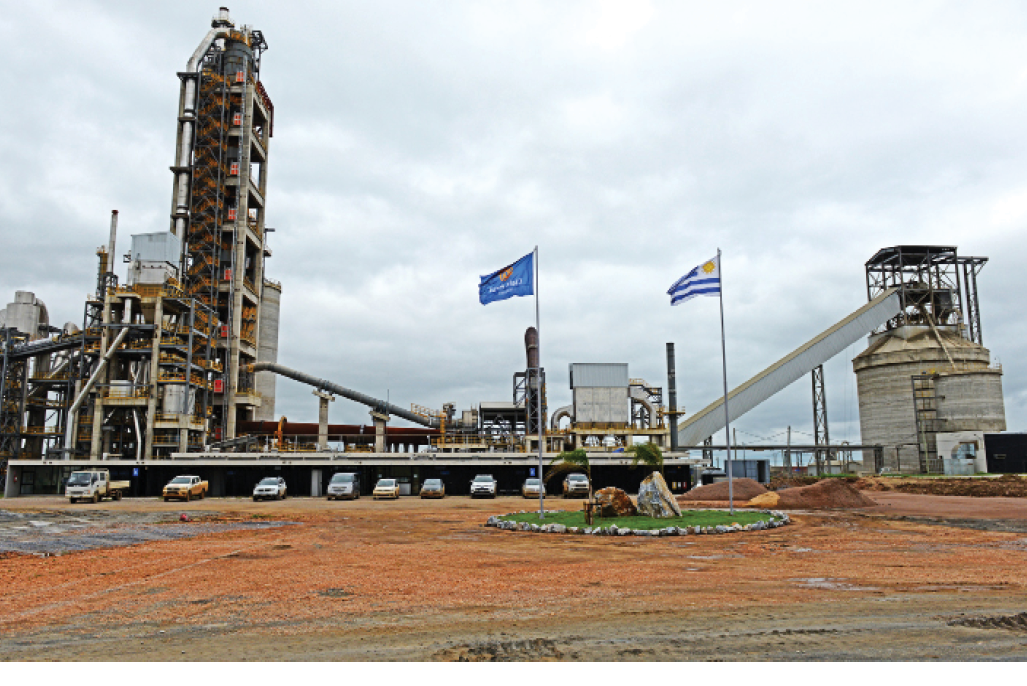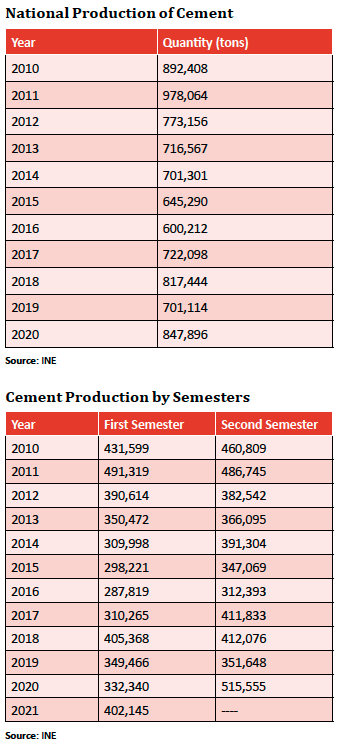By Mauro Nogarin
After registering six consecutive quarters of year-on-year declines, the Uruguayan Ministry of Economy ratified the official growth projection for the economy of the country: 3.5% in 2021, after registering a year-on-year decline in the first quarter of 2.8%.
Among the indicators that confirm a better performance of the economy are tax collection, industrial production and the evolution of foreign trade, both in exports and imports.

According to the Central Bank of Uruguay (BCU), the expansion registered in the construction sector in the April-June period compared to a year ago corresponds to an observed growth in both the construction of buildings and infrastructure works. The works related to the installation of the third pulp mill in the country and public works such as the Central Railroad, highways, seaports and new electricity transmission lines are particularly noteworthy.
With the data corresponding to April-June 2021, the added value of construction accumulates three consecutive positive two-month periods and is located, in terms of physical volume, at the levels of the fourth quarter of 2018, that is, at levels before the pandemic.
With this data, in the first half of 2021, according to the new INE statistical bulletin, construction activity would have expanded, on average by 8.75% in relation to the same period in 2020.
Another positive is the balance of the main cement plants in Uruguay. According to information from the National Institute of Statistics, in 2020 national production reached 847,900 tons – breaking a record held since 2011. When comparing with the volume produced in 2019, the institute observed an increase of 21%.

During the first half of 2021, the national production of portland cement in Uruguay amounted to 402,145 tons, a figure higher than that reached in the same period of 2019 and 2020.
When taking into account the monthly average of local portland cement production, it is highlighted that, in 2020, an average of 70,658 tons per month were produced, slightly above the average reached in 2019, although below the records of 2017 and 2018.
If the price without the Value-Added Tax (VAT) is taken into account – which the main suppliers and manufacturers of portland cement in Uruguay report monthly to the INE in the framework of its survey for the calculation of the Construction Cost Index (ICC) – the price of cement in the domestic market shows a monthly drop in July 2021.
According to the approximate calculation of the price of a ton of portland cement in the domestic market, as of July 2021 it would have been around $202, while in June 2021 it was $206 dollars. According to experts, it is possible that this slight drop in price is associated with different factors related to the conformation of the domestic market.
Regarding exports in 2020, 98% of portland cement was destined for Paraguay and the remaining 2% was sent to Brazil. Meanwhile, during the January-May 2021 period, almost all external sales of portland cement went to Paraguay.
Portland cement imports have also become relevant as of 2020, when statistics confirmed that about 66,440 tons of cement were purchased abroad. A trend that continues so far in 2021 with the importation of some 37,527 tons.
The economic and financial performance of the Uruguayan industry is very important. With the economic and social difficulties of the last year, the investment by Cielo Azul into a new cement plant located in the department of Treinta y Tres with a capacity of 600,000 tpy stands out. The project employed more than 1,000 people and registered an investment of $140 million.
The plant was inaugurated by President Lacalle Pou on Sept. 16 of this year at the site located 15 kilometers from the city of Treinta y Tres, where the Cielo Azul company has a limestone deposit of about 180 million tons that guarantees a potential supply for about 100 years.
The investment made so far exceeds $140 million, and 35% is distributed for equipment that includes three vertical mills, a furnace and fuel burners.
Mauro Nogarin is Cement Americas’ Latin American contributor.



